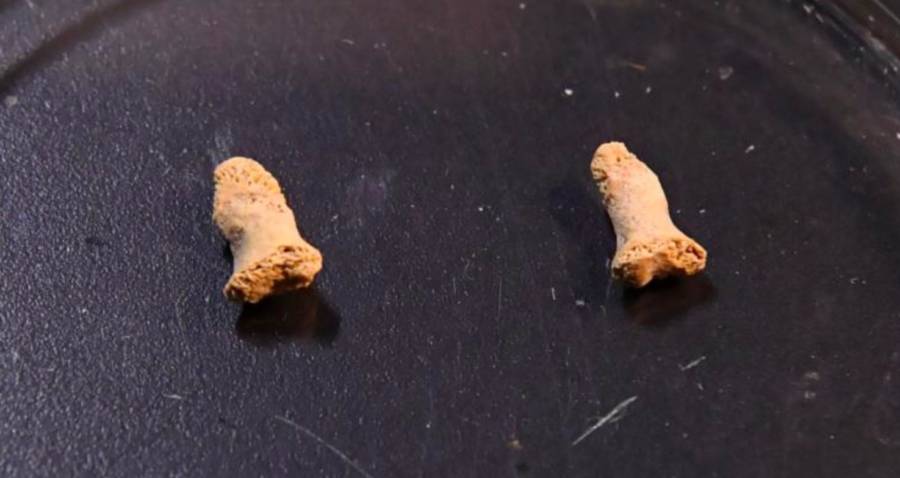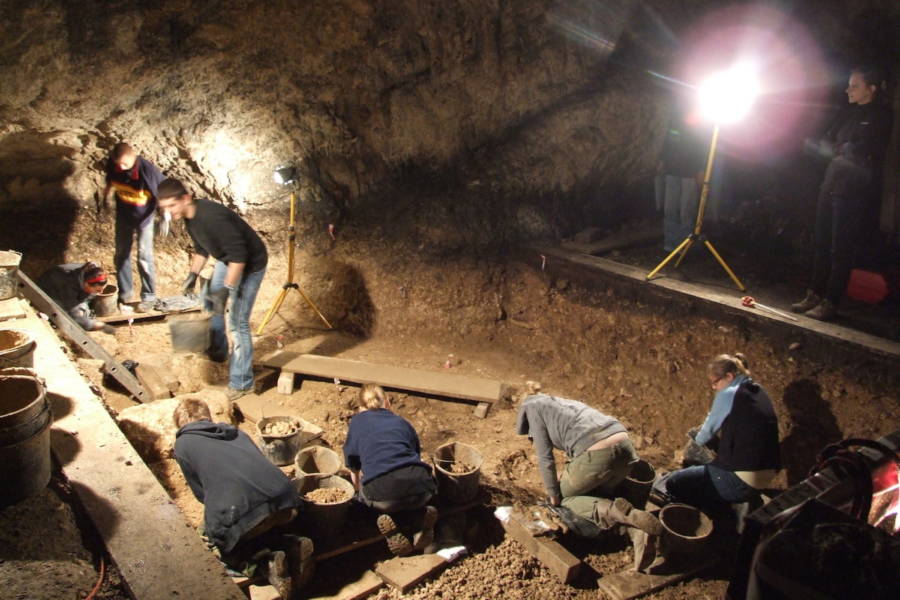115,000-Year-Old Bones Found In Poland Reveal Neanderthal Child Eaten By Gigantic Prehistoric Bird

The tiny finger bones belonging to the Neanderthal child.
A few years ago, a team of researchers in Poland came across a pair of Neanderthal bones that held a grisly secret: Their owner had been eaten by a giant bird.
The two finger bones belonged to a Neanderthal child who had died roughly 115,000 years before, making those bones the oldest known human remains from Poland, according to Science In Poland.
Once the bones were analyzed, the scientists concluded that the hand bones were porous because they had passed through the digestive system of a large bird.
It is unclear if the bird killed the child and then ate him or if the animal simply scavenged on the child’s already-dead body, but researchers say that “neither option can be ruled out at this point.”
No matter what happened, these bones are a remarkable discovery. The researchers said that this is the first known example from the Ice Age of bones passing through a bird’s digestive system.

A team of researchers conducting an excavation in Cave Ciemna.
Neanderthals, which are very close relatives of modern humans, most likely popped up in Poland around 300,000 years ago and died out about 35,000 years ago.
Professor Paweł Valde-Nowak from the Institute of Archaeology of the Jagiellonian University in Kraków says that he can count the number of unearthed Neanderthal remains on a single hand, including the child’s finger bones.
This groundbreaking discovery was almost overlooked because, when the phalange bones were first found in the cave, they were accidentally mixed up with animal bones. It wasn’t until a laboratory analysis was conducted on the bones that scientists figured out how important they were.

The tiny finger bones belonging to the Neanderthal child.
The analysis showed that the child was somewhere between five and seven-years-old when he died. The bones are tiny, less than one centimeter long, and are poorly preserved so scientists will unfortunately not be able to conduct DNA analysis on them.
Despite this setback, the scientists are confident that they belonged to a Neanderthal.
“We have no doubts that these are Neanderthal remains because they come from a very deep layer of the cave, a few meters below the present surface,” Dr. Valde-Nowak said. “This layer also contains typical stone tools used by the Neanderthal.”
Dr. Valde-Nowak added that just because the bones were discovered in the cave, it doesn’t necessarily mean that the Neanderthals used it as a permanent residence. He said that it is entirely possible that they just used it seasonally.
It’s remarkable to think that a poor child who might’ve been killed by a giant bird thousands of years ago has given Poland one of its greatest archaeological discoveries of all time.
sometimes you eat the bird
ReplyDeletesometimes the bird eats you